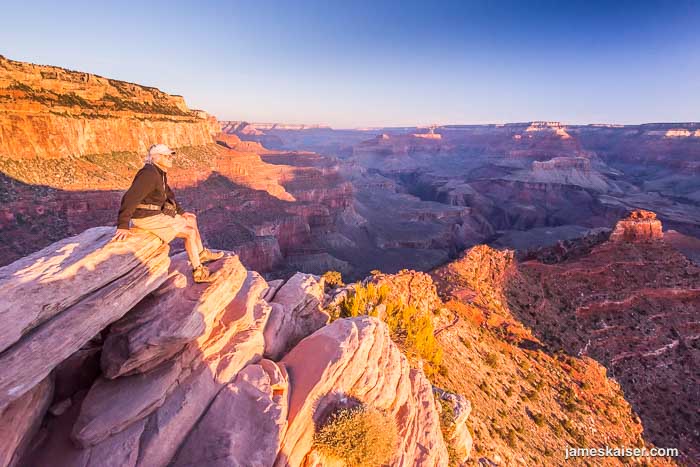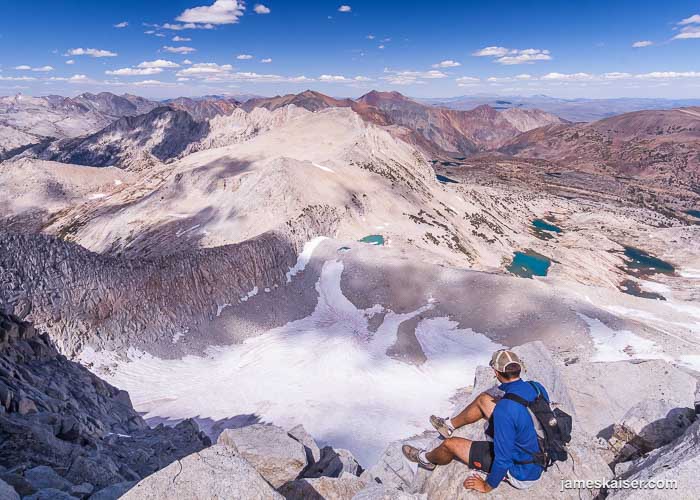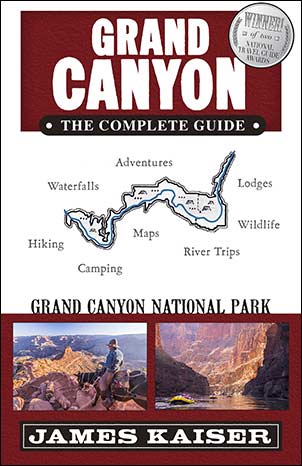
America’s national parks are filled with superlatives. They protect the world’s tallest trees (coast redwoods: 379 feet), largest trees (giant sequoias: 52,000 cubic feet), and oldest trees (bristlecone pines: 5,000 years old). Denali is North America’s tallest mountain at 20,310 feet, while Hawaii’s Mauna Loa, measured from the seafloor, is over 32,000 feet—nearly 4,000 feet taller than Everest. Grand Canyon showcases over two billion years of earth history, arranged chronologically for your viewing pleasure. And Yellowstone, terrifyingly, is the world’s largest supervolcano … but let’s not talk about that.
Let’s talk about what happened in 1872 when President Ulysses S. Grant established Yellowstone as the world’s first national park for “the benefit and enjoyment of the people.” At the time, this was a revolutionary concept. Prior to the creation of Yellowstone, land was generally only protected for kings and nobles, which is a nicer way of saying dictators and oligarchs. The word “protected” is also questionable because the land was often set aside for hunting.
Yellowstone represented something fundamentally different. Conceived within a century of America’s birth, this “national” park was a reflection of our founding ideals. It was land that belonged to the people, safeguarded for future generations. As Teddy Roosevelt put it during a visit to Yellowstone in 1903, the national park idea was “noteworthy in its essential democracy.”
By 1905 five national parks had been established, and more were on the way. In 1916, President Woodrow Wilson created the National Park Service to better manage America’s growing collection of scenic wonders. Today the agency protects over 400 locations, including 61 national parks and 131 national monuments. All told they cover over 85 million acres—an area larger than Italy.
Over the past two decades, I’ve had the great pleasure to explore dozens of America’s national parks and monuments. The landscapes are stunning, the views are glorious, but it’s the story behind the scenery that really fascinates me. And the more I learn, the more I view national parks not just as beautiful outdoor destinations but America’s Epic Classrooms.

Native History
In modern, urban America, it’s easy to forget about our country’s native heritage. Not in national parks, where native history is chronicled and celebrated. Dozens of Native American heritage sites are protected, including Mesa Verde and Chaco Canyon, the two most impressive archaeological structures north of Mexico. Even the official symbol of the National Park Service, an American Indian arrowhead, pays homage to native history.
Of course, the history of national parks, like the history of America itself, is stained with blood. Yosemite National Park offers one of the most dramatic examples. On March 27, 1851, a vigilante group calling itself the Mariposa Battalion became the first white men to enter Yosemite Valley. Their goal was the removal of the Ahwahneechee tribe, and they were brutally successful.
But amid the scenes of destruction were also scenes of beauty. Soaring 3,000-foot cliffs sheltered half a dozen of North America’s tallest waterfalls. Low-hanging clouds drifted through the treetops. Arriving at a spot near present-day Tunnel View—a scene depicted on the cover of Ken Burns’ America’s Best Idea—one member of the group, Dr. Lafayette Brunnell, proclaimed:
“I have here seen the power and glory of a supreme being … the majesty of His handy-work is in that ‘Testimony of the Rocks.’”
Before they left, the Mariposa Battalion named the valley after the vanquished “Yosemite” tribe. But Yosemitewas not what the Ahwahneechee called themselves. Yohhe’meti was what a neighboring tribe called the Ahwahneechee. Translation: “They are killers.”
Thirteen years later, in the midst of the Civil War, Abraham Lincoln signed a bill establishing the Yosemite Grant, which permanently protected Yosemite Valley. For the first time in human history, a piece of wilderness was protected for the public, simply because it was beautiful. Although the Yosemite Grant was overshadowed by American bloodshed, it laid the foundation for the creation of national parks.

Art
Decades before the idea of preserving wilderness took hold, American painters explored the transcendental qualities of nature. The idea of wilderness offering spiritual refuge seems obvious today. But in the early 1800s it was revolutionary. Ever since the Puritans arrived on the shores of a vast, unfamiliar continent, wilderness was viewed as a terrifying place to avoid or an economic resource to be exploited. Sometimes both.
During the Industrial Revolution, however, filthy cities displaced wilderness, and a new emotion took hold: nostalgia for unspoiled nature. In 1825, a young artist named Thomas Cole traveled up the Hudson River to paint dramatic natural landscapes. His works kicked off an artistic movement called the Hudson River School that blended wilderness, Romanticism, patriotism and God.
In 1844, Cole traveled to Maine in search of new, dramatic landscapes. He found them among the bold mountains and rocky shores of Mount Desert Island. A few years later Cole’s protege, Frederick Edwin Church, followed in his footsteps, and his paintings of what would become Acadia National Park created a frenzy among audiences in Boston, New York and Philadelphia. Visitors soon flooded Mount Desert Island to experience the beauty firsthand.
Not to be outdone, Church’s rivals ventured West to paint the frontier. Albert Bierstadt headed to Yosemite to paint vast scenes on vast canvases (one measured 140 square feet), while Thomas Moran joined government expeditions to Yellowstone and Grand Canyon to visually chronicle America’s frontier.
When the artists’ paintings were displayed in eastern cities, they drew blockbuster crowds. In the days before Instagram, landscape painting offered a rare glimpse of exotic destinations. Top Hudson River School artists became international celebrities (today we’d call them influencers), and the buzz they generated led to the creation of multiple national parks. By infusing wilderness with spirituality, the Hudson River School also forged a powerful ethos that still resonates today.

Science
At the start of the 19th century, most scientists believed the Earth was roughly 4,000 years old. One hundred years later, Earth’s age was estimated at several billion years old. This tectonic shift in human thinking led to, among other things, Darwin’s Theory of Evolution and the discovery of Ice Ages. And some of the most important research from this golden age of science took place in—you guessed it—national parks.
In 1864 Harvard professor Louis Agassiz traveled to Mount Desert Island. The Swiss-born biologist was investigating his controversial theory that, thousands of years earlier, massive glaciers covered much of the northern Hemisphere. Viewing the scenery, he estimated the island was once buried under 6,000 feet of ice. Today, Acadia National Park offers some of the world’s most dramatic examples of Ice Age geology. This includes both towering mountains rounded by glaciers and massive boulders deposited in gravity-defying positions when the glaciers melted.
Across the continent, John Muir applied Agassiz’s theories to his beloved Yosemite. A meticulous observer of the natural world, Muir concluded that Yosemite Valley’s cliffs were also sculpted by glaciers. Josia Whitney, the distinguished head of the California State Geologic Survey, mocked Muir’s conclusion. Yosemite Valley, Whitney declared, could only have been created by a cataclysmic event, such as an earthquake. The debate grew so heated that Whitney (whose name now graces the highest peak in the contiguous U.S.) called the self-taught Muir “an ignoramus sheepherder.” But Muir’s theory ultimately triumphed.
Meanwhile, in the heart of the Southwest, John Wesley Powell embarked on America’s greatest outdoor adventure. His goal was to explore the mysterious interior of Grand Canyon to “make collections in geology, natural history, antiquities, and ethnology.” The one-armed Civil War veteran, who had no whitewater experience, recruited nine men to paddle four boats down the Colorado River. Three months later, two boats emerged from Grand Canyon carrying six skeletal men (the other four perished). Powell’s death-defying observations ushered in a wave of scientific exploration, and today Grand Canyon is arguably the most studied geologic feature on the planet.
Following in Powell’s wake was C. Hart Merriam, director of the U.S. Biological Survey, who explored Grand Canyon in 1889. As Merriam ventured down the canyon, he noticed distinct communities of plants and animals living together at different elevations. At the time, the concept of ecological zones did not exist, and Merriam’s observations of what he later called “life zones” helped form the basis of modern ecology.

National Parks Today
Today, national parks play an even more crucial role in the study of science. A century ago, most parks were surrounded by wilderness. Now many are islands of wilderness surrounded by encroaching development. Moving forward, these oases of biodiversity—”ready-made laboratories” in the words of E.O. Wilson—will become even more vital.
As a species, humans are growing ever more disconnected from the natural world. But national parks still have the ability to inspire wonder and curiosity. Let’s use this increasingly rare virtue to inspire future generations to learn about nature and science. As Gary Machlis, the first-ever science advisor to the National Park Service director, recently said: “I don’t think there’s a single topic taught in high school science that can’t be linked to a national park.”
I’d take it a step further. There’s not a single topic in any high school class that can’t be linked to a national park. Outside of a classroom, there’s no place where I’ve learned more.
Plan the perfect trip to Grand Canyon!
Order Grand Canyon: The Complete Guide

My award-winning, full-color Grand Canyon guidebook is filled with insider tips. Save time & money. Plan the ultimate Grand Canyon adventure!